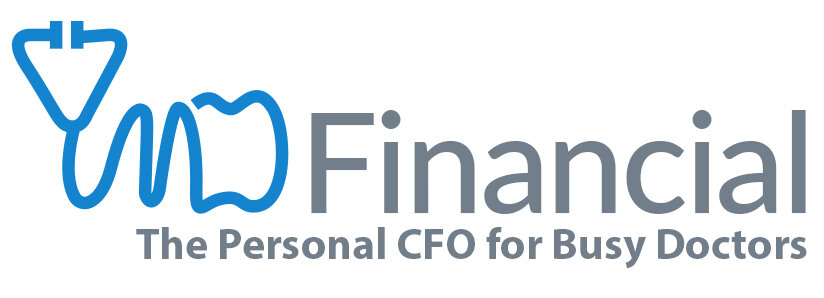We often mention the phrase “financial wellness”, but what does that actually mean, and what does it look like? Surprisingly, it looks a lot like wellness in every other part of your life; this is achieved in-part by putting upper and lower limits in place to make sure you account for the unknown and make space for what matters.
Here are some examples of implementing limits/margin in everyday life:
1. Time
We give ourselves extra time at the airport for incidentals, such as a long line and security checkpoints.
We commute to work with a wider margin of time to account for the oft-unpredictable traffic.
2. Physical Energy
We plan our workouts around what we know we have going on in our lives; less cardio on days you have rounds all over the hospital, and more cardio on days you are stuck at a desk.
Having a set bedtime is not just for children! A reasonable bedtime gives you enough time while sleeping to reach the deep sleep cycle, leading to more physical and mental energy the following day.
3. Mental, Spiritual & Emotional Energy
Doctors can’t always predict when their days are going to be taxing in these areas, but knowing what helps you recharge is vital; whether that’s meditation, a chat with co-workers, or a short walk outside.
When we don’t take time to recharge our mental, spiritual, or emotional batteries, we can’t help to build up other’s charge either.
4. Health
Some of the ways we are able to control our health is by monitoring our sleep and diet and regularly going to the doctor. Of course, our doctors already know that, but it is a great reminder to set health margins.
5. Financial
What we really want to talk about today is how we implement financial margins to keep you financially healthy.
So, what are these financial margins and how do we create them?
We set these margins in 5 main areas:
1. An emergency fund with 3-5 months fixed expenses
If you’d like more information on this, check out our latest podcast on the Cascade Catastrophe Plan where we discussed this in detail.
2. Limited Credit Card Debt
Carrying over a credit card balance should only happen if you’ve had an emergency expense come up.
3. Children’s education fund
We don’t need to tell doctors how expensive post-secondary education is! We want to make sure your children are set up for financial success, just like you.
4. Money left over every month
This is great, and means you aren’t spending more than you’re making.
5. A systematic investment plan
Pay yourself first! Before anything, you’re putting money into your retirement, savings, etc.
How to implement financial margins:
Step 1: Prioritize your top 3-5 most important financial commitments you want to make. Some areas that are top for our clients:
Having enough money for retirement
Putting kids through college with a minimal amount of student debt
Owning a home
Having a nice car
Putting children through private elementary, middle school, and high school
Taking family vacations
Step 2: Decide how much we want to save/invest each month for these goals. It might be for:
Retirement - maximizing 403B, 401K, Backdoor Roth, ~$45k into brokerage account.
College - about $200/mo. into 529 plan, and $200 into another brokerage earmarked for college savings.
Saving for a down payment - put $1k into a 25/75 brokerage account.
Nice car - $500 into a 25/75 brokerage account.
Step 3: Fun-Money Account
We will use this for trips, new furniture, and other things that are not on your top 5 list.
When you have margin in this account—great, spend it! Enjoy!
When you don’t--wait. If you spend the funds anyway, you will be eating into your margin and creating a lot of stress!
Step 4: Once we have these accounts set up, it’s important we fund them in the right order:
Spend on the important things first: Savings/investments, then the rest.
House/car poor—this sucks money from other areas of life and makes life very stressful, because this money is no longer liquid.
Incorporating margins is all about living your best life, enjoying your work, your family, and not stressing about your finances. Creating and maintaining these margins gives you a clearer path to achieving financial wellness and a sense of peace about your future.
Listen on Apple Podcast, Google Podcast or Spotify
CONTACT US
1-888-256-6855
Remember that you can send us any questions or potential topics at: Info@MDFinancialAdvisors.com
Katherine Vessenes, JD, CFP®, is the founder and CEO of MD Financial Advisors who serve 500 doctors from Hawaii to Cape Cod. An award-winning Financial Advisor, Attorney, Certified Financial Planner®, author and speaker, she is devoted to bringing ethical advice to physicians and dentists. She can be reached at Katherine@mdfinancialadvisors.com.

![Financial Margins for Doctors [Podcast]](https://images.squarespace-cdn.com/content/v1/561feb4ee4b0de0eb30d6d3c/1634912779905-UIM5RZJN2GRN6ZAQIM34/small-tim-johnson-unsplash.jpg)
